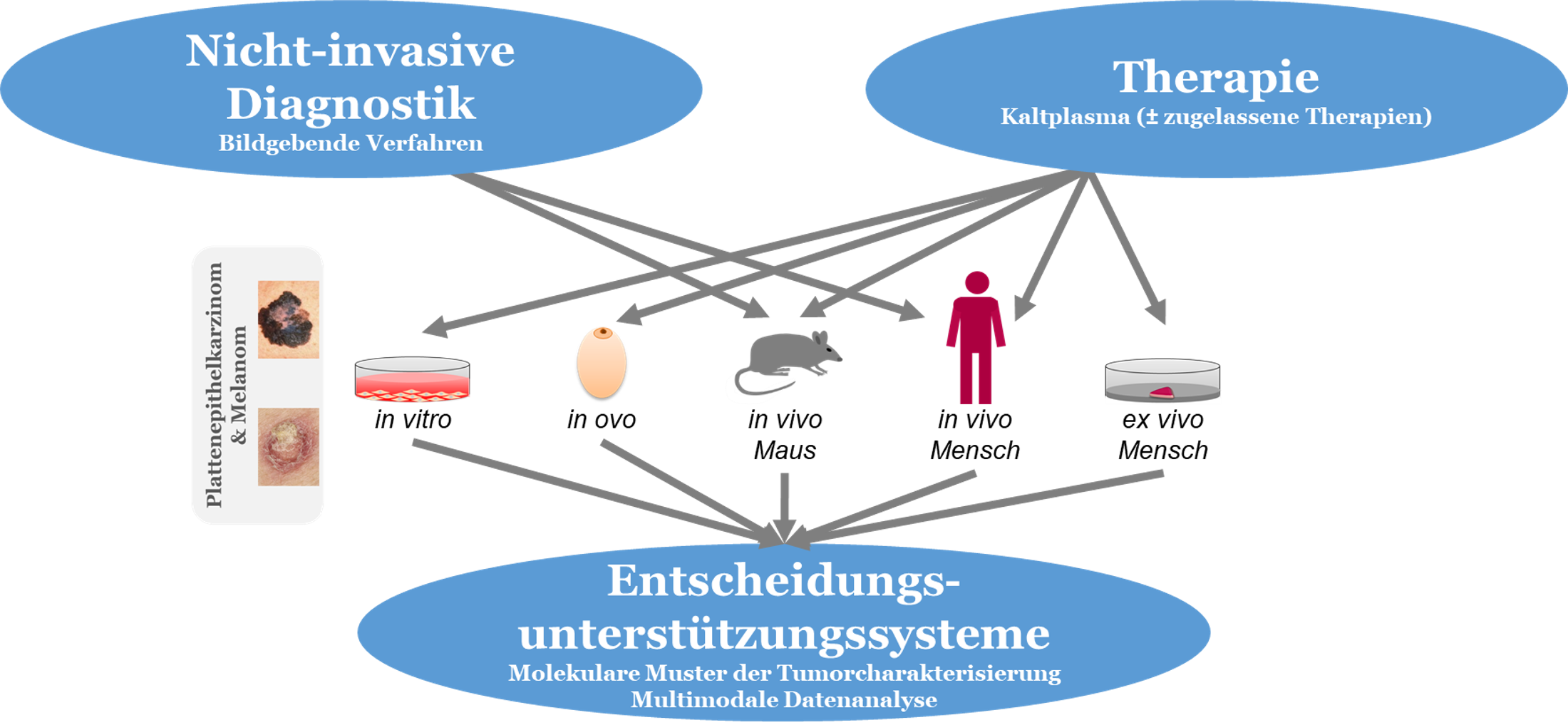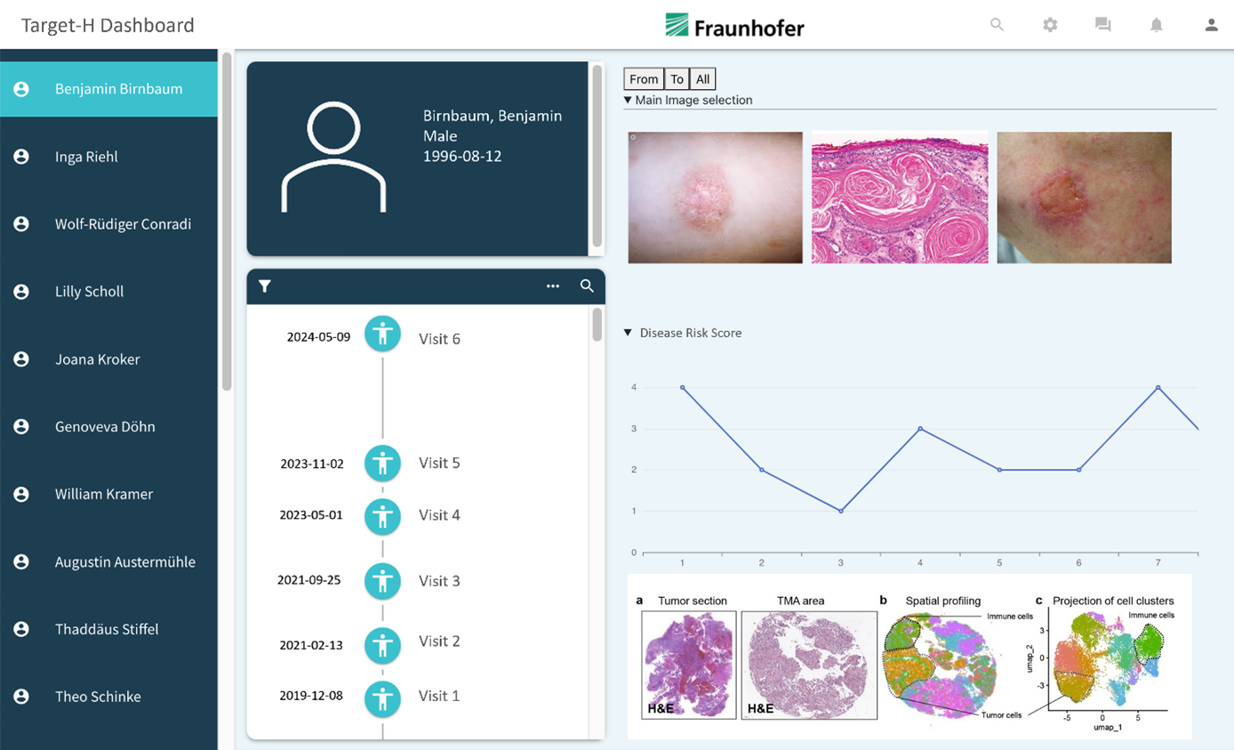Innovative Therapies, Smart Diagnostics, and Predictive Oxidative Signaling Patterns Using Skin Cancer as an Example
The research project TARGET-H focuses on improving the diagnosis and treatment of skin cancer. The goal is to detect and treat squamous cell carcinomas and malignant melanomas earlier, more gently, and more precisely. To achieve this, advanced photonic technologies, AI-supported imaging, and innovative diagnostic devices are combined. New therapeutic approaches, such as cold plasma therapy, are being scientifically evaluated and integrated into treatment.
Combining Multiple Data Sources for Personalized Decisions
Within TARGET-H, a clinical decision support system (CDSS) is being developed that integrates and analyzes various data sources—from imaging sensor data to omics information. With the help of artificial intelligence, image data are automatically and reproducibly evaluated to enable more objective diagnoses. Relevant molecular features are to be extracted directly from the image data in order to create a deeper understanding of tumor biology.
Web Application for Clinical Practice
The CDSS will be implemented as a modern web application. The use of state-of-the-art approaches such as multi-modal fusion, super-resolution, multimodal segmentation, as well as explainable and uncertainty-aware AI models is planned. The aim is to support medical professionals in diagnosis, therapy selection, and treatment monitoring. All recorded information and visualizations will be integrated into a structured medical report and made available to physicians to enable more precise and personalized treatment of skin cancer patients.
The project is being carried out as part of Mecklenburg-Western Pomerania’s state excellence program “Application-Oriented Excellence Research” and is co-financed by the European Union (ERDF).
 Fraunhofer Institute for Computer Graphics Research IGD
Fraunhofer Institute for Computer Graphics Research IGD







